
Pathways, Benefits, and Tips
A Comprehensive Guide to USA PR Immigration
What is U.S. Permanent Residency (PR)?
- PR holders cannot vote in federal elections or hold certain public offices.
- PR holders can apply for U.S. citizenship after five years of continuous residence (three years if married to a U.S. citizen).
- PR holders are required to maintain their status by living in the U.S. for at least six months per year.
Pathways to U.S. PR
Family-Sponsored Immigration
Family-based immigration is one of the most common ways to obtain a U.S. Green Card. U.S. citizens and lawful permanent residents can sponsor certain family members for permanent residence. There are two main types of family-sponsored categories:
- Immediate Relatives: S. citizens can sponsor their spouses, unmarried children under 21, and parents. There are no annual limits on the number of visas issued in this category, making it one of the faster options.
- Family Preference Categories: This category is for other relatives, such as siblings, married children, and adult children of S. citizens or permanent residents. These categories are subject to annual limits, which can result in long waiting times.
Tip: Ensure that you provide all necessary documentation, such as proof of your relationship, when applying for family-based immigration. This may include marriage certificates, birth certificates, or other supporting documents.

Employment-Based Immigration
- EB-1: For priority workers, including individuals with extraordinary abilities in the sciences, arts, education, business, or athletics, outstanding professors and researchers, and certain multinational executives and
- EB-2: For professionals with advanced degrees or individuals with exceptional abilities in their
- EB-3: For skilled workers, professionals, and other workers (such as those in unskilled labor).
- EB-4: For certain special immigrants, including religious workers and employees of international
- EB-5: For investors who are willing to invest a substantial amount in a new commercial enterprise that will create jobs for S. workers.
Applicants in the EB-1, EB-2, and EB-3 categories must generally have a job offer from a U.S. employer. In the case of EB-5, applicants must invest a minimum of $1 million (or $500,000 in targeted employment areas) in a U.S. business that creates at least 10 full-time jobs.
Tip: If applying through employment, ensure that your employer completes the labor certification process (for EB-2 and EB-3) and is willing to sponsor you.

Diversity Visa (DV) Lottery Program
Applicants must meet certain eligibility criteria, including being from an eligible country and having at least a high school education or two years of work experience in an occupation that requires at least two years of training or experience.
Tip: The application process for the DV lottery is free. However, be cautious of fraudulent websites or services that charge fees to apply.
Refugee or Asylee Status
Individuals who are granted refugee or asylee status in the U.S. can apply for permanent residency one year after their arrival or status grant. Asylum is granted to individuals who fear persecution in their home country due to race, religion, nationality, membership in a particular social group, or political opinion.
Refugees are individuals who are outside their home country and are unable or unwilling to return due to the same reasons. Refugees and asylees must apply for PR after one year of residing in the U.S.
Tip: If you’re applying as a refugee or asylee, ensure you maintain proper documentation of your status, as it will be required during the PR application process.

Special Immigrant Visas (SIV)
Tip: Keep in mind that SIVs typically have a limited availability, and there may be specific criteria for each group.
The U.S. Investor Visa (EB-5)
Benefits of U.S. Permanent Residency
Live and Work Anywhere in the U.S.:
Access to Healthcare and Social Security
Education
Family Sponsorship
Pathway to Citizenship
Tips for a Successful U.S. PR Application
Start Early and Be Thorough
Understand Visa Backlogs
Consult with an Immigration Lawyer
Stay Informed About Policy Changes
Maintain Legal Status
Conclusion
Obtaining U.S. Permanent Residency is a significant step that offers many benefits, including the freedom to live and work in the U.S., access to public services, and the opportunity to eventually become a U.S. citizen. Whether you are applying through family sponsorship, employment, investment, or other pathways, understanding the requirements and preparing your application thoroughly will increase your chances of success. By following the steps outlined in this guide and seeking professional advice when necessary, you can navigate the U.S. immigration system more effectively.
